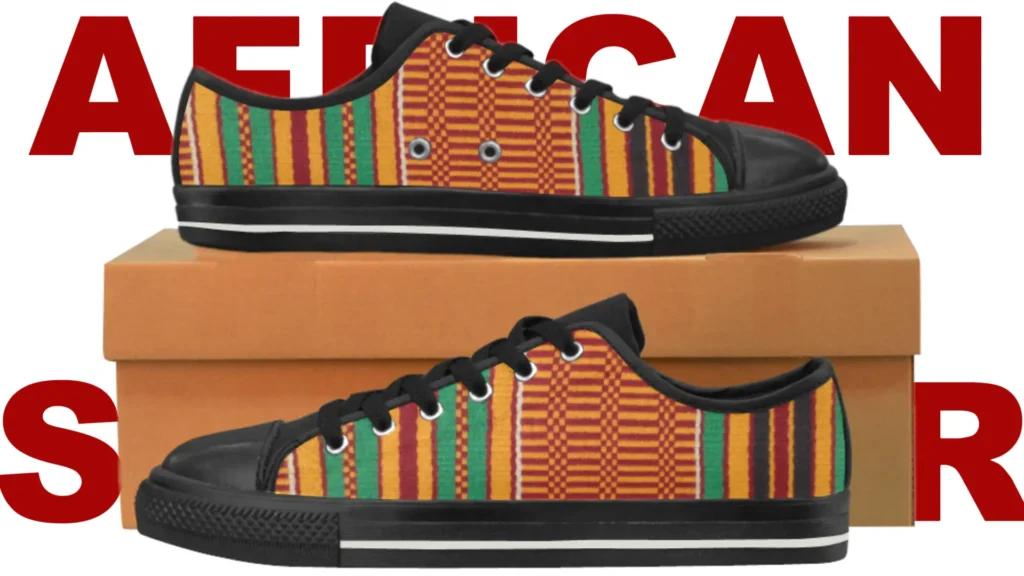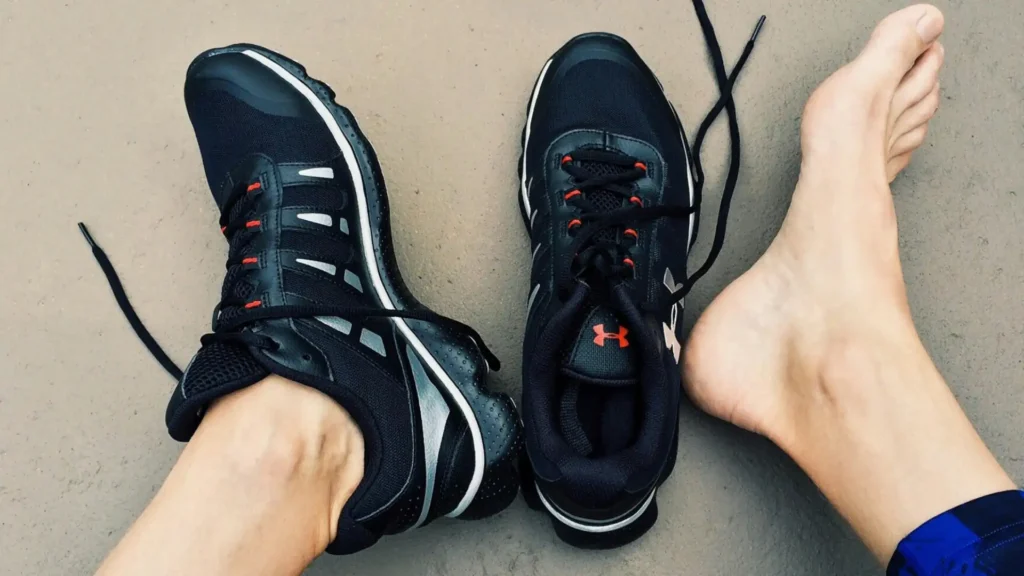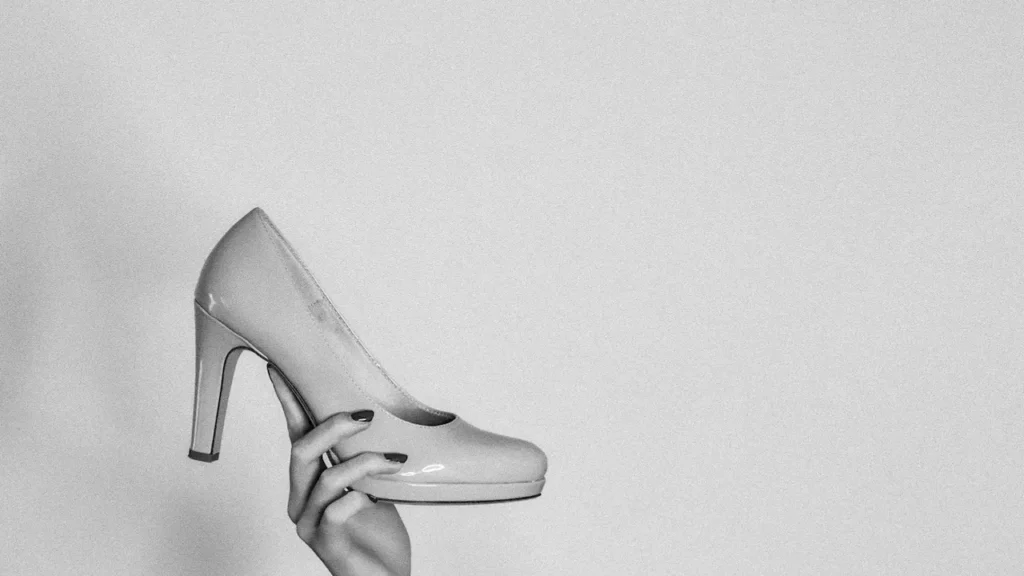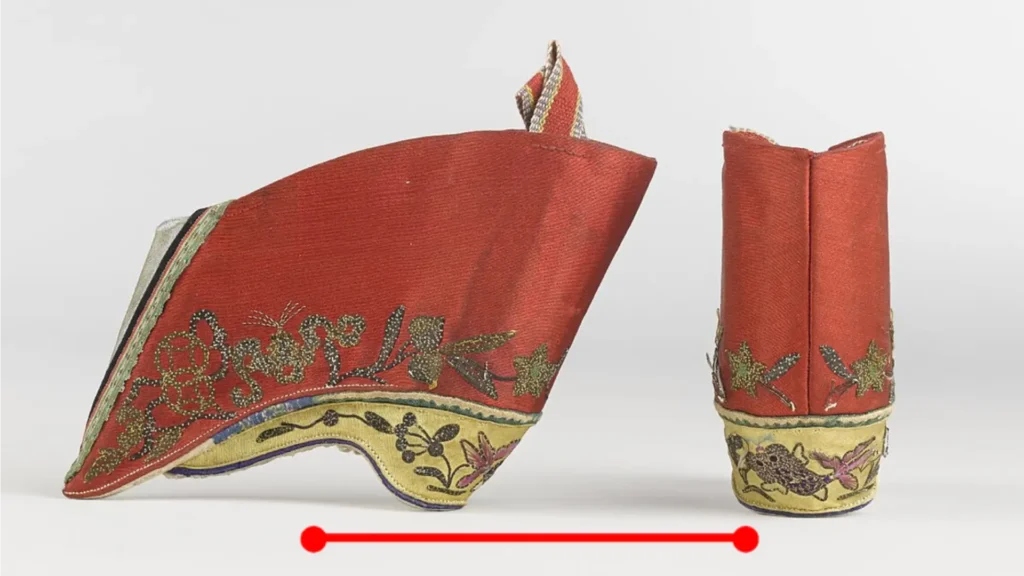African prints, with their vivid colors, intricate patterns, and profound cultural significance, have become a dynamic force in global fashion, extending their influence to sneaker designs. These textiles, rooted in the diverse traditions of the African continent, carry stories of heritage, identity, and resilience.
Sneakers are now canvases for cultural expression, blending modern streetwear with ancient artistry.
Introduction to African Prints in Fashion
African prints are more than just textiles; they are repositories of history, tradition, and meaning. Originating from regions across the continent—West Africa, East Africa, and beyond—these fabrics feature bold geometric shapes, vibrant hues, and symbolic motifs.
Ankara, Kente, Mudcloth, Adinkra, and Kitenge have long adorned traditional garments such as wrappers, robes, and headwraps, worn for ceremonies, daily life, and rites of passage. In recent decades, their appeal has surged globally, infiltrating runways, streetwear, and, notably, sneaker designs.
Sneakers offer a unique platform for African prints. Nike, Adidas, and Puma, alongside independent designers and African artisans, have embraced these patterns, creating footwear that marries contemporary style with cultural depth.
This fusion resonates with consumers seeking authenticity, individuality, and a connection to global narratives. By exploring the most common African prints in sneaker designs, we uncover not only their aesthetic appeal but also the stories, values, and symbolism they carry.
Commonly Used African Prints in Sneaker Designs
Here, we dive into the five most prevalent African prints in sneaker designs, detailing their origins, visual traits, applications in footwear, and the meanings they embody.
1. Ankara (Wax Print)
Ankara, often called “Dutch wax print,” has a complex history. In the 19th century, Dutch traders, inspired by Indonesian batik, developed wax-resistant dyeing techniques and introduced these textiles to West Africa, particularly Nigeria, Ghana, and Senegal. Local communities embraced and transformed them, infusing regional flair. Today, Ankara is a hallmark of West African fashion, produced both locally and abroad.
This cotton fabric bursts with vibrant, multicolored patterns—geometric grids, florals, stars, or abstract forms—in hues like red, yellow, blue, green, and orange. No two prints are identical, reflecting the artisanal process.
Ankara’s versatility and bold aesthetic make it a top choice for sneaker designs. Nike have incorporated Ankara into limited-edition Air Max or Jordan models, covering uppers, tongues, and linings. Custom designers, especially from the diaspora, stitch Ankara panels onto sneakers, creating one-of-a-kind pieces. High-top and low-top styles alike shine with these lively patterns.
Ankara patterns often carry specific meanings, varying by region and design. The speedbird motif, a stylized bird, symbolizes swift progress, ambition, and breaking barriers. Another popular pattern, money flies, with wing-like shapes, represents wealth, prosperity, and the fleeting nature of fortune. Wearers of Ankara sneakers thus express personal aspirations, optimism, and cultural pride.
In Nigeria, Ankara is worn for weddings, festivals, and daily life, reflecting identity and celebration. Its use in sneakers extends this vibrancy to a global stage, appealing to fashion enthusiasts and diaspora communities.
2. Kente
Kente hails from the Akan people, particularly the Ashanti and Ewe of Ghana and Côte d’Ivoire. Dating back centuries, this handwoven fabric was originally reserved for royalty and significant ceremonies, crafted by skilled weavers using silk and cotton. Its name derives from the Akan word “kenten,” meaning basket, reflecting the woven strips’ resemblance to basketry.
Kente features narrow strips woven on looms, sewn together to form intricate geometric patterns. Colors—gold, red, green, blue, black, and white—blend in diamonds, zigzags, and checks, creating a regal, textured look.
Kente’s luxurious patterns elevate sneaker designs. Adidas and Reebok have experimented with Kente-inspired prints, while Virgil Abloh (through Off-White) integrated authentic Kente into high-end releases. It adorns uppers, laces, and soles, offering a striking, heritage-rich aesthetic.
Every color and pattern holds meaning. Gold signifies wealth, royalty, and high status; red reflects passion, sacrifice, or struggle; green symbolizes growth, harvest, and renewal; blue stands for peace and harmony; and black represents maturity or mourning.
Patterns like “Obaakofo Mmu Man” (one person does not rule a nation) emphasize unity and collective strength, while “Sika Futoro” (gold dust) celebrates prosperity. Kente sneakers thus become wearable tributes to leadership, community, and legacy.
Once exclusive to Ashanti kings, Kente is now worn widely for graduations, weddings, and cultural events, symbolizing pride. Its sneaker applications honor this tradition, bridging ancient prestige with modern style.
3. Mudcloth (Bogolanfini)
Mudcloth, or Bogolanfini, originates from the Bamana people of Mali, West Africa. Traditionally, women hand-spin cotton, while men weave and dye it using fermented mud, a technique passed down for generations. Used in rites of passage, protection rituals, and daily life, Mudcloth reflects Mali’s rural and spiritual heritage.
Earthy tones—black, white, brown, beige, and yellow—form bold, hand-painted geometric patterns like zigzags, triangles, circles, and lines. Each piece is unique, with a raw, organic texture.
Mudcloth’s rugged, minimalist appeal suits avant-garde and earthy sneaker designs. Custom shops and boutique brands apply it to uppers, side panels, or accents, often paired with leather or canvas for contrast. Its neutral palette complements both loud and subtle footwear styles.
Patterns tell stories or convey values. A zigzag line might represent life’s challenges and adaptability, while concentric circles symbolize community, family, or protection. A triangle pattern could denote strength or femininity. Mudcloth sneakers embody resilience, connection to nature, and ancestral wisdom.
Historically, Mudcloth protected hunters or marked transitions. Its use in sneakers brings this grounded, protective energy to urban fashion, appealing to those valuing authenticity and history.
4. Adinkra
Adinkra symbols come from the Akan people of Ghana, particularly the Ashanti, emerging in the 19th century. Originally stamped onto cloth using carved calabash and natural dyes, these motifs adorned garments for funerals, ceremonies, and royal events, reflecting wisdom and values.
Simple, monochromatic symbols stand out on plain backgrounds. Iconic designs include Sankofa (a bird looking backward), Gye Nyame (supremacy of God), and Dwennimmen (ram’s horns for strength and humility).
Adinkra’s subtle yet profound designs shine in sneaker customization. Symbols are embossed on leather uppers, printed on fabric panels, or etched into soles. Limited-edition runs by brands or artisans, especially in Ghana and the diaspora, feature these motifs, blending minimalism with meaning.
Each symbol ties to a proverb or concept. Sankofa (“go back and get it”) urges learning from the past for progress. Gye Nyame (“except for God”) affirms divine power and omnipresence. Dwennimmen encourages strength balanced with humility. Adinkra sneakers carry these lessons, making footwear a medium for spirituality and reflection.
Adinkra’s ceremonial roots tie it to mourning, wisdom, and leadership. Its sneaker presence amplifies these messages, resonating with wearers seeking purpose and connection.
5. Kitenge
Kitenge, a wax-printed cotton fabric, thrives in East Africa—Kenya, Tanzania, Uganda, and beyond. Similar to Ankara, it emerged from wax-dyeing techniques but evolved into a regional staple, worn for daily life, celebrations, and cultural events since the 20th century.
Vibrant, eclectic patterns—floral, animal, paisley, or abstract—burst in orange, purple, yellow, and teal, reflecting East African creativity and diversity.
Kitenge’s lively designs adorn sneaker uppers, linings, and tongues, often in collaborations with East African designers or brands. Custom shops and festivals like Kenya’s Nairobi Fashion Week showcase Kitenge sneakers, bringing regional flair to global streetwear.
While less codified than Kente or Adinkra, Kitenge patterns often evoke celebration, nature, and community. Florals might symbolize beauty and growth, while animal motifs (e.g., zebras) reflect strength or the wild. Kitenge sneakers radiate joy, vitality, and East African identity.
Worn for weddings, markets, and festivals, Kitenge is versatile and beloved. Its sneaker applications extend this celebratory spirit, connecting wearers to East Africa’s dynamic culture.
Why African Prints in Sneaker Designs?
The rise of African prints in sneakers stems from several forces:
- Cultural Pride: Designers and wearers, especially from the African diaspora, use these patterns to honor roots, reclaim narratives, and celebrate identity.
- Aesthetic Appeal: Bold colors and unique designs stand out, offering a fresh alternative to plain sneakers and appealing to trendsetters.
- Globalization and Collaboration: Partnerships between African artisans, designers, and Puma, Nike, or custom shops (e.g., Nigeria’s Sneaker Afrika) amplify visibility.
- Storytelling: Each print carries a narrative—wealth, unity, resilience—turning sneakers into wearable art with personal or communal resonance.
- Sustainability and Craft: Kente and Mudcloth highlight artisanal skill, appealing to eco-conscious and culture-savvy consumers.
Symbolism and Cultural Impact
The symbolism of African prints in sneakers goes far beyond mere decoration, weaving history, identity, and cultural values into contemporary fashion.
Each pattern tells a story—whether it’s the vibrant Kente cloth of Ghana, the earthy Mudcloth of Mali, or the bold Ankara designs—connecting wearers to ancestral traditions. For the African diaspora and global audiences, these prints serve as a powerful affirmation of heritage and pride, transforming sneakers into more than just footwear but into statements of cultural identity.
By incorporating these motifs, designers and wearers alike engage in a visual dialogue that honors the past while embracing modern style.
Beyond aesthetics, African prints in sneakers carry messages of empowerment and aspiration. Adinkra symbol Sankofa (meaning “go back and fetch it”) encourage learning from the past, while Kente’s Sika Futuro (gold dust) represents wealth and prosperity.
These designs inspire wearers to carry forward the values embedded in the fabric—ambition, resilience, and wisdom. Similarly, Ankara’s “speedbird” evoke progress and freedom, reinforcing the idea that fashion can be both meaningful and motivational. This layer of symbolism transforms sneakers into wearable art that uplifts and educates, bridging generations and geographies.
African prints symbolize heritage, empowerment, unity, and growth, appealing to wearers who value style with substance. From Nigeria to Kenya, Ghana to Mali, African prints in sneakers celebrate a continent’s richness, inviting the world to walk in its story.




